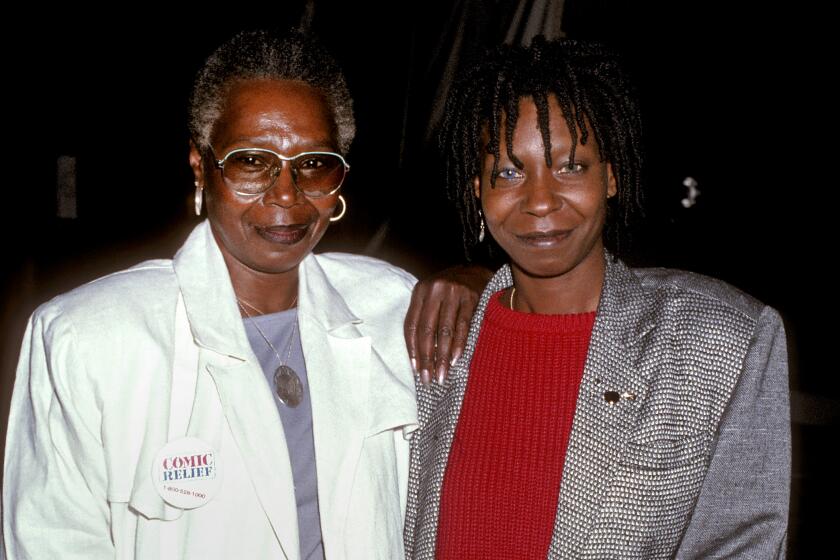Papp’s Take on the Bard : SHAKESPEARE ALIVE! <i> by Joseph Papp and Elizabeth Kirkland (Bantam Books: $4.50; 224 pp., illustrated) </i>
It’s a baffling book, this “Shakespeare Alive!” that the New York Shakespeare Festival’s Joseph Papp has written with his colleague, Rhodes scholar Elizabeth Kirkland.
It is almost all context. Its tone strives to be conversational. Too often it’s that of those educational packets passed out at student matinees. Its scholarliness stops short of footnotes and often of proper attributions. It illustrates every situation with quotes from Shakespeare. Not all are pertinent.
It is being published as a companion to the new 29-volume Bantam Shakespeare Library (edited by David Bevington, with a foreword to each play by Papp) aimed at making Shakespeare “more readable” without altering much more than some archaic spelling. Consequently, it must be seen for what it is: an educational tool. But how good a tool is it?
The prologue--a simplistic but, yes, “readable” portrait of a day in the life of Elizabethan England--is merely educated conjecture.
Part II and the first two chapters of Part III, one reads for reference not pleasure. And then with caution. It’s full of intriguing if oversimplified detail--about life, trade, immigration, travel, medicine, mores, bigotry, history, politics and convention--sometimes substantiated, sometimes not.
Papp/Kirkland overexplain some things--such as the Renaissance as “meaning rebirth”--and underexplain others. A passage about the young Queen Elizabeth’s life with her last stepmother (Catherine Parr) and alleged goings-on with her stepfather (Thomas Lord Seymour), never names either. That’s not just patronizing. It’s lazy.
Even high-schoolers with little or no background in the period deserve more than “readable” but selective context.
Yet by the time we hit Chapter 8, and from there to the end, things change dramatically. Gone is the condescension. The authors finally treat their readers as grown-ups and plunge into the roiling world of 16th-Century acting companies, their rivalries, playhouses, playwrights, productions and language. A particularly captivating chapter dwells on “English as a Foreign Language,” unveiling (and demystifying) the magic of Shakespeare’s ease with coining words, his ability to twist and bend them to make them say what he wants and, at the same time retain a poetry that no one has ever matched. Here the book is finally genuine--vivid, enthusiastic and respectful of the reader’s intelligence.
Sign up for our Book Club newsletter
Get the latest news, events and more from the Los Angeles Times Book Club, and help us get L.A. reading and talking.
You may occasionally receive promotional content from the Los Angeles Times.



